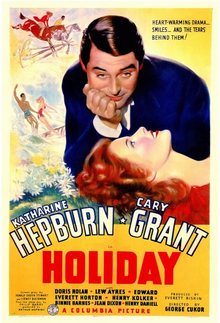The New Breed Of Sci-Fi Adventure-“Star Wars: The Force Awakens” (2015)-A Film Review
DVD Review
By Laura Perkins
Star Wars: The Force Awakens (VII), starring Daisy Ridley, Adam Driver, John Boyega, Oscar Isaac, Harrison Ford, Carrie Fisher, 2015
Science Fiction movies sure aren’t what they used to be. Although I was, am not a great fan of the genre and have taken this assignment to review one of the seemingly never-ending Star Wars sagas (number 7 if you can believe it) that ripple through the cinematic universe every few years to give flagging studio tickets sales a boost as our boss Greg Green said when he assigned this beast to “broaden my horizons” I sat through my fair share of them growing up. Growing up just outside of Albany, New York my older brother would in the interest making his “baby-sitting” of me woes lighter take us in his car to the Majestic Theater in downtown Albany on Saturday afternoon’s to the matinees.
Of course since the average film was much shorter then usually around an hour and one half there would be a double-feature, sometimes a horror movie and a sci fi or sometimes two sci fi’s for the afternoon. What has struck me as amazing according to my recollections (and some “cheap sheet” research via invaluable for movie summaries if not for everything Wikipedia) after viewing this chapter of Star Wars was how differently these films have tracked society in their respective times. Then, the late 1950s maybe early 1960s these sci fi films had “aliens” (not earthly aliens seeking shelter from earth’s storms in places like America to work and raise families without fear of death and disaster from the forces controlling their home societies) who were inevitably scary and ready to wreak havoc on an unsuspecting earth. Were in those deep freeze Cold War days foreboding when we were not quite sure we would make it from one day to the next if the “big one,” the nuclear bombs we rightly feared would blow us away. And the storylines and bad guy monsters and weird forces from outer space left no room for compromise-it was earthly civilization, us, such as it was or them.
Naturally the earthly civilization won out over the mutants and creeps who tried to do us in (read in newspeak the Soviets). Naturally as well in those days the leaders, usually one leader, who figured out how to tame the alien menace was an All-American, uh, guy who as Si Lannon loves to say went mano a mano with these unearthly forces. Saved civilization and grabbed the good-looking young woman in the fall-out (some things haven’t changed witness the younger versions of Hans Solo and Princess now General Leia and their courting ritual in the first three Star War sagas from about a million years ago it seems). Alternatively beat down the mad scientist who created some kid scary stuff, usually grossly radioactive and had to take the fall.
That was then though. Maybe it is the intervening years where the Soviet menace has turned to dust and those “alien” enemies, the “them” have gone from outer space to around the corner and the world having explored the skies and found nothing unfriendly or otherwise (the cynic would say thus far) that has changed things. Add in a little what I would call sarcastically “universal multi-culturalism” and you have a very different mix. Now those scary monsters who populate the Star Wars alternative planets are just regular guys and gals who hang around bars mixing in with humans and whatnot.
Gruesome monsters that still scare me who I wouldn’t want to run into in daylight much less a dark alley at night but who we can’t offend because they might be allies, and besides “body-shaming” is socially taboo these days. More hopefully real live earthling minorities as in this film actually do good in the struggle against what is now not just earthly evil but universal. But perhaps the biggest difference, surprise is that those delicate passive young women of the 1950s have been transformed into righteous warriors in their own right kicking ass and taking numbers just like the good guys of yore. Here the warrior Rey played by Daisy Ridley showing her metal to good effect and throwing down bad guys left and right.
All of those changes are basically pluses but that does not stop the story line from being the same old same old-here the latest incarnation of the bad guys, the First Order, looking for universal dominance against the gnat-like Resistance (a very appropriate term these days in America). Here the line-up is a young woman, a young black man, a gung-ho pilot, Hans Solo, General Leia against that mass of incompetent soldiers in that silly white armor aided by massive firepower which would make the Pentagon generals green with envy, led by General Huk, directed by ugly Supreme leader Snoke with the ringer being an imitation Darth Vader dressed in Johnny Cash black Kylo.
The ringer part-this Kylo aka Ben is none other than the progeny of Hans and Leia when they were doing their own version of mano a mano. Get this though Kylo aka Ben is so enamored of the dark side that he kills his Oedipal father Hans. Nothing but mourning all around. Except the Resistance is able to crush the First Order (for now) and that young woman, that Rey, gets to Luke Skywalker which is what this whole trip was all about. Stay tuned for the next one (2017 already filmed and shown) and the next one for 2019 just in time once again to boost flagging studio ticket sales. Nothing here made me want to grab onto the genre for dear life.











.jpg)